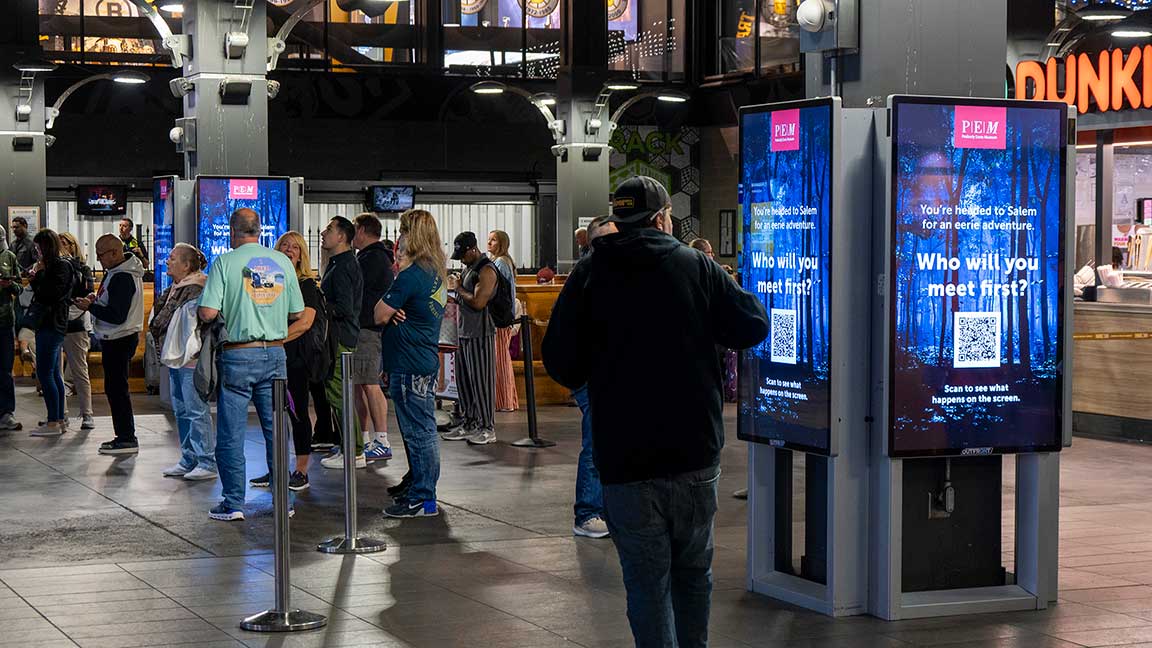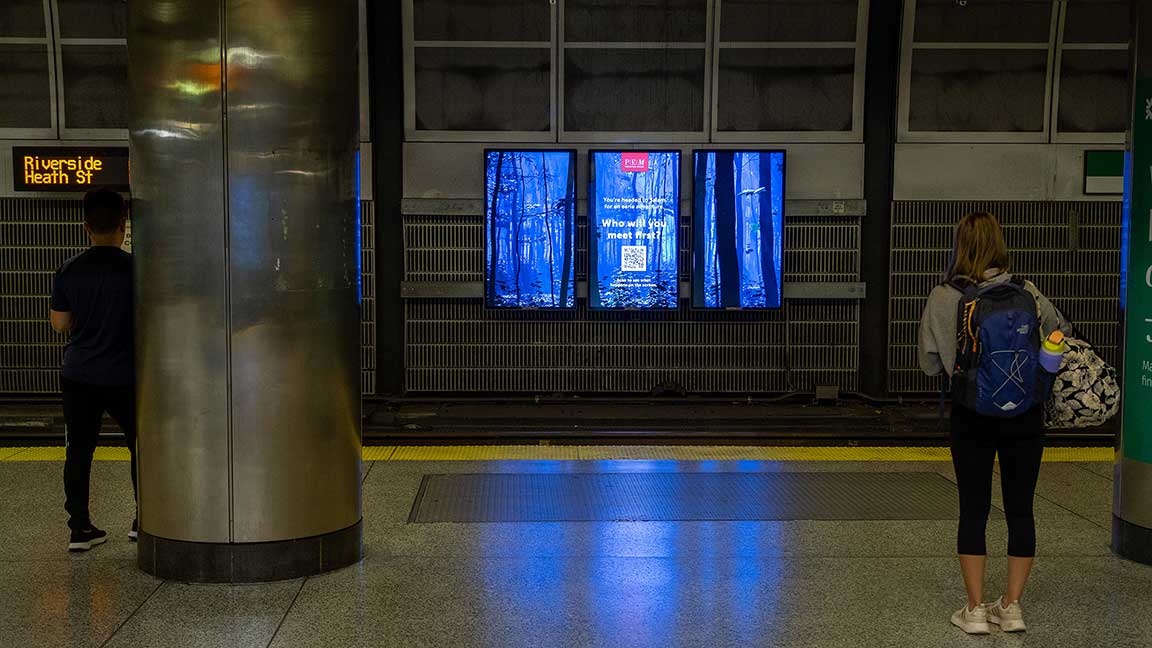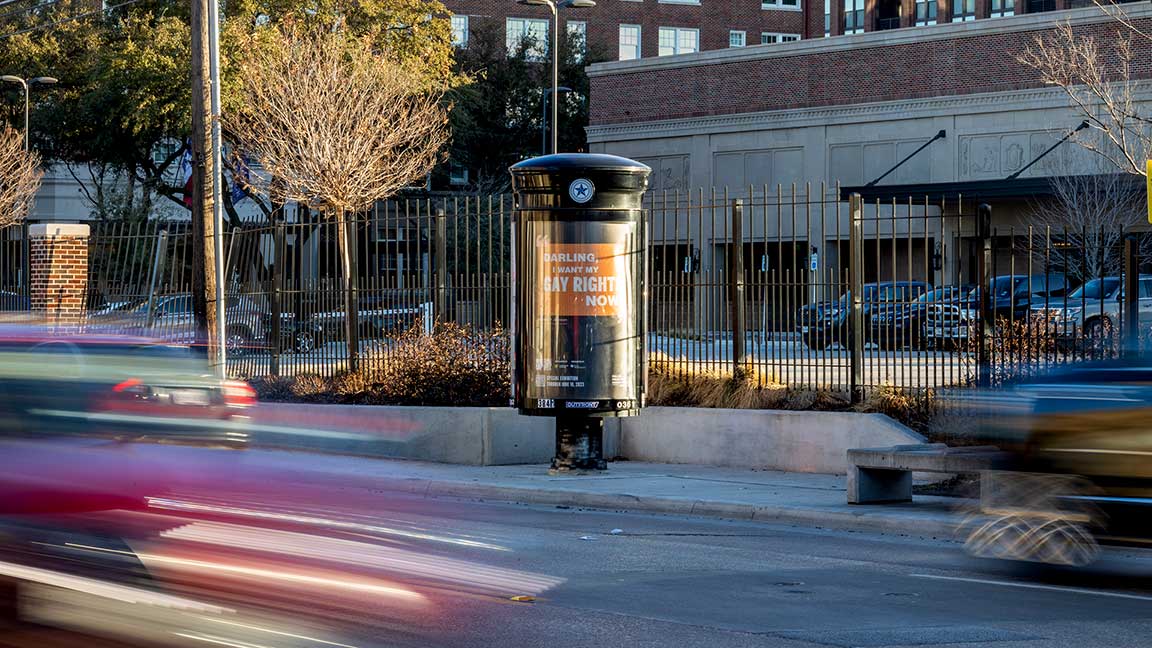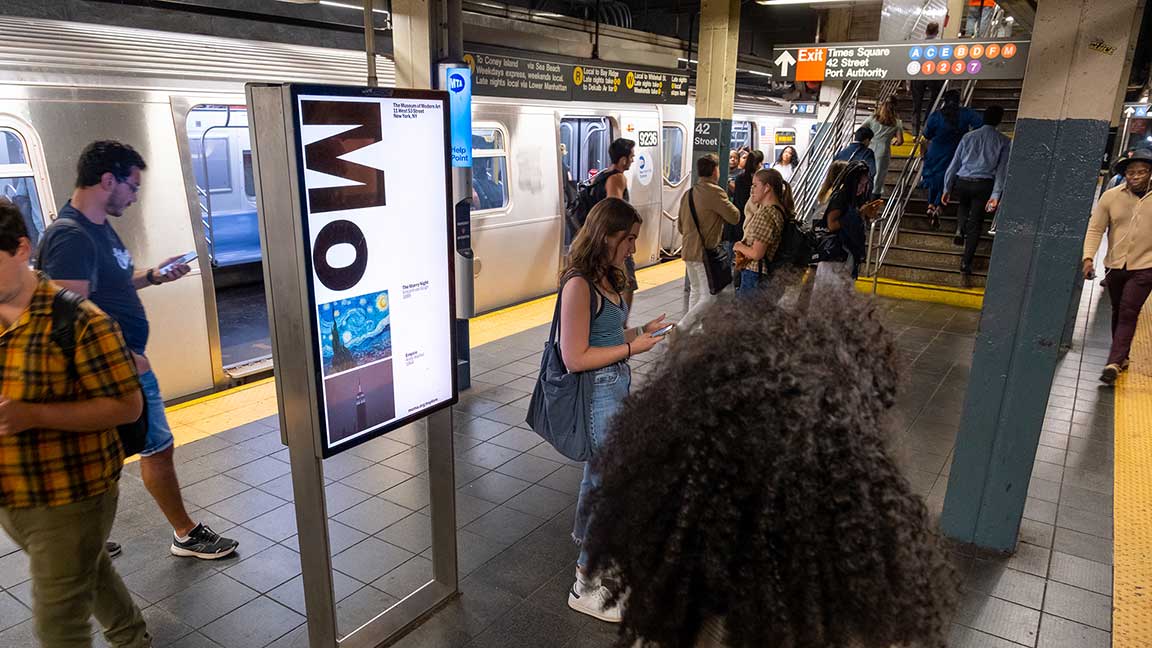
How Museums Leverage High-Tech OOH to Transform Visibility and Visitation
January 16, 2025
Museums are drawing crowds with out of home campaigns that find success through a common thread: they push the boundaries of traditional advertising. Leveraging modern capabilities we now have to boost engagement and measure campaign performance, out of home can make museums more visible to locals and tourists than ever.
Take Peabody Essex Museum (PEM), for example. With roots dating back to 1799, Peabody Essex is a cultural gem situated in historic Salem, Massachusetts – a place that, with the right exposure, is a tourism goldmine during Halloween time.

The museum brought its out of home campaign to the next level by tapping into QRad, the cutting-edge technology from our XLabs team that puts audiences in control of their ad journey.
Given OOH's traditionally fixed nature, you might wonder how that's possible. It’s as simple as a scan. Passersby scan a QR code and watch as their phone screen and the ad in front of them transform in real time, directly responding to user engagement.

To maximize QRad’s impact, PEM strategically positioned ads at North Station, a key New England transportation hub frequented by thousands of daily commuters. It’s also the sole train connection linking Bostonians to Salem – making it a vital service to avoid the traffic surrounding witch-town in the fall.
This engaging campaign generated over 3,000 QR code scans resulting in 1,500 secondary clicks. Peabody Essex Museum’s campaign shows how digital interaction is redefining audience engagement for the future of transit advertising. But that’s just one example of how technology is revolutionizing the use of OOH. How can a museum amplify frequency, seamlessly layer impressions on top of OOH, and track engagement? The answer: mobile.
Mobile is one of our go-to tools, complementing out of home by boosting both reach and frequency. This results in a greater impact than either medium could achieve on its own. Better together, like pineapple and pizza. We may not all see eye to eye on that... so let us demonstrate: consumers are 48% more likely to engage with a mobile ad after encountering the same campaign out of home (SOURCE: Ocean Neuroscience).
This complementary relationship is what makes mobile a no-brainer when constructing an OOH media plan. Anchoring a campaign with tangible media formats creates the invaluable IRL presence we all know and love, while mobile reinforces the message to leave a lasting impression on consumers.
The Dallas Holocaust & Human Rights Museum (DHHRM) capitalized on this synergy to drive awareness of their "Rise Up: Stonewall and the LGBTQ Rights Movement" exhibition. Highly anticipated after a 3-year covid delay, the exhibition gave an in-depth history of the LGBTQ movement from the 1950s to 2015.
The museum chose street-level assets in close proximity to the museum to promote their new exhibition to passersby. Expanding coverage and maximizing frequency, mobile impressions were layered over this area and in Fair Park, where the PRIDE celebration was taking place.
Leveraging timely events and proximity targeting – that’s smart out of home. The campaign generated a noticeable increase in awareness and foot traffic, tracking 10,649 museum visits from phones where the mobile ads were served. Increasing visibility for the museum and exhibition supported their goal of increasing visibility of the LGBTQ+ community (SOURCE: GroundTruth).

Incorporating mobile with an OOH campaign expands campaign measurement capabilities, providing performance data and insights that extend beyond your traditional out of home campaign. That brings us to the most trending capabilities in our industry right now: measurement and attribution.
Reach and brand awareness have always been OOH’s wheelhouse, but today’s measurement and attribution offers countless ways to quantify the impact of a campaign, transforming the way we think about traditional media.
Top-funnel medium no more – at least not exclusively. Advertisers are seeking quantifiable ROI, and we now have the ability to measure footfall, website visitation, brand lift, tune-in and app download.
New York’s Museum of Modern Art (MoMA) put us to the test. The renowned cultural institution wanted to see how its advertising impacted brand lift and specifically wanted to measure the influence on consumers behaviors and attitudes.
We teamed up with our independent third-party measurement partner MFour to assess the campaign's impact on commuters’ awareness, recall, and consideration. Over the course of 20 weeks, MoMA ran Liveboards in New York’s busiest subway stations, showcasing its offerings with the museum’s signature branding.

The results are in! We boosted brand recall and visitation intent for MoMA, achieving 55% ad recall, a 31% increase in unaided brand awareness, and a 58% higher likelihood of museum visitation (SOURCE: MFour).
MoMA's campaign set the stage as a prime example of how quantifying objectives with OOH allows advertisers to gain deeper insights into their audience and optimize future efforts for even greater impact.
As museums continue to embrace the evolving landscape of out of home, they are redefining how cultural institutions connect with their audiences. The combination of traditional OOH and advanced technologies is driving deeper engagement and enabling more precise, data-driven campaigns that keep the crowds coming.
Contact OUTFRONT today to learn more about how out of home can move the metrics that matter most to you!
Author: Courtney Barrett, Marketing Coordinator @ OUTFRONT
Links to third-party content are not endorsed by OUTFRONT Media. Past performance may not be indicative of future results. OUTFRONT does not guarantee specific results or outcomes.
Relevant OOH Content Straight To Your Inbox
Essential out of home insights, trends, and success stories. Delivered weekly.



